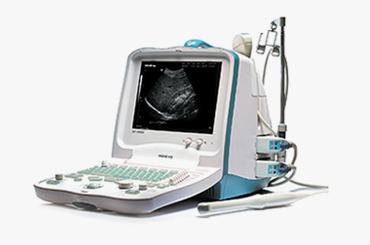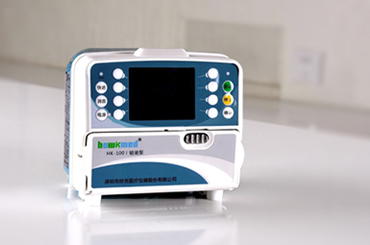What Does the C Rating on a Lipo Battery Mean: Meaning and Calculation?
Jan 13, 2020 Pageview:4269
What Does the C Value Mean On lipo batteries?
C-rates basically monitor the charge and discharge rate of a lipo-battery. 1C is the rate of the capacity of the battery, which means that a fully charged battery should be able to provide one hour. Similarly, if it is at 2C, it means that battery is going to provide only 30 minutes and at 5C it is going to provide only 12 minutes. Some lipo-batteries are high performing therefore, they are expected to go above 1C rate as well. As the C rate goes higher in number, it produces lower capacity and vice-versa. In order to increase the capacity, same battery can be charged at 0.5C or over 2 hours, as this will bring a 100% increase in the battery capacity.
Also, newer batteries are expected to charge at their 100% capacity, but as the lipo battery gets old, its capacity tends to decrease.
What Does the C Rating Mean On a lipo battery?
C Rating mean a great deal for lipo batteries, in fact they are very important to consider when buying a lipo battery. C Rating basically refers to how quickly a lipo battery can be charged or in other words, how much current should be pumped into a lipo battery while charging.
The most common rate is 1C, which gives one hour. If the battery is of high quality, then they are expected to tolerate higher charge rates. However, if the battery is low quality, then it may overheat or explode at higher charge rate. Therefore, mostly people recommend charging at 1C in order to ensure safety and security. Many lipo battery manufacturers give instructions along with the battery with regard to charging rates in order to increase battery life and performance.
Internal Resistance in LiPo Batteries:
Every LiPo battery comes with internal resistance, which limits any lipo battery's maximum current draw. Internal resistance is the main cause of overheating and exploding of lipo batteries because when energy is lost to internal resistance of lipo battery, it turns into heat. The resistance formula is as follows:
Ohm's Law: Voltage (V) = Current (I) x Resistance (R)
Understanding this formula will make us understand the meaning of resistance here and its relationship with voltage and current. Voltage is proportional to internal resistance, which means having high resistance will result in bad voltage. Furthermore, internal resistance tends to increase as the lipo battery ages. Batteries with high C-rating have low internal resistance, however, it is not always true for all batteries with high C ratings or low internal resistance.
As mentioned earlier, C rating is important and a useful tool for selecting a lipo battery. Having said this, many lipo battery manufacturers overstate the C rating of their Lipo batteries just to increase their sale. Thus, C rating is an important tool but cannot always be trusted. Always go for battery testing and its reviews by other users to see whether the battery is high performing or not. Lipo batteries with lower price rates often have high internal resistance, making voltage sag more obvious over the time, eventually leading to low life span and performance of the lipo battery.
How Is LiPo C Rating Calculated?
Understanding the calculation of C rating on Lipo battery is very important as it helps elaborate how C ratings work and have an impact on the life and performance of the battery. As explained earlier, C rating is a tool to assess how quickly a battery can discharge energy. In order to determine the maximum discharge, the C rating is combined with the battery's capacity. The lipo battery capacity and its C rating are inversely proportional, which means, as the C rating goes higher, capacity goes down.
The C rating allows its users to calculate the maximum current that can be drawn from the lipo battery without damaging or overheating the battery itself. The formula is as follows:
Maximum current drawn = Capacity x C Rating
Let's take an example to understand the formula, for a battery with 3S 1000mah 20C Lipo, the maximum current drawn is going to be 1000a x 20C = 20A. This means we can discharge 20A continuously without hurting or damaging the lipo battery.
When the battery is discharged faster, it tends to lose its life span and performance as well. You can go above 20A, but it is not recommended by most lipo battery manufacturers.
Always consider the C rating while charging lipo batteries. Mostly it is recommended to charge lipo batteries at 1C, even if the instructions by the manufacturer suggest otherwise. As soon as you start charging the lipo battery at higher rate, it will start to lose its performance and battery life in the long run. The reason for losing battery life at higher C rating is that the cells become oxidized when the C rating goes higher. So, charging the battery at its capacity is the best decision for lipo battery users.
Conclusion
High quality batteries with increased capacity have mostly higher prices. Going for a cheaper lipo battery can be a risk, as they may have low grade cells and higher internal resistance, which can lead to battery overheating and explosions. Investing in a good quality lipo battery is extremely necessary if you want to safe yourself from fire hazards and accidents at home. Always look at the C rating and capacity of the battery before making a purchase, and most importantly never forget to look at the reviews from the current users of lipo battery, it will give you a detailed analysis of the battery beforehand.
- Prev Article: 18650 Type Lithium-Ion Battery Cells-Type and Using
- Next Article: Zinc vs Lithium Batteries Definition and Differences
Leave Message
Hottest Categories
-
Hottest Industry News
-
Latest Industry News










